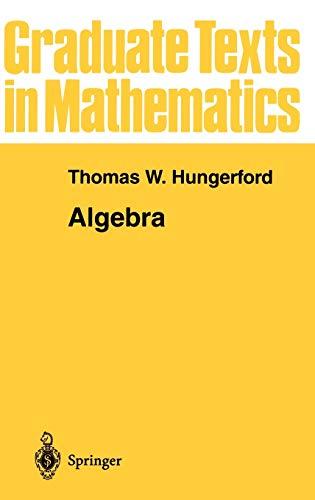Let L be a left ideal and Ka right ideal of R. Let M(R) be the ideal
Question:
Let L be a left ideal and Ka right ideal of R. Let M(R) be the ideal generated by all nilpotent ideals of R.
(a) L + LR is an ideal such that (L + LR)n ⊂ Ln+ LnR for all n ≥ 1.
(b) K + RK is an ideal such that (K + RK)n ⊂ Kn+ RKn for all n ≥ 1.
(c) If L [resp. K] is nilpotent, so is the ideal L + LR [resp. K + RK], whence L ⊂ M(R) [resp. K ⊂ M(R)].
(d) If N is a maximal nilpotent ideal of R, then R/ N has no nonzero nilpotent left or right ideals.
(e) If K [resp. L] is nil, but not nilpotent and π : R → R/ N is the canonical epimorphism, then π(K) [resp. π(L)] is a nil right [resp. left] ideal of R/ N which is not nilpotent.
Fantastic news! We've Found the answer you've been seeking!
Step by Step Answer:
Related Book For 

Algebra Graduate Texts In Mathematics 73
ISBN: 9780387905181
8th Edition
Authors: Thomas W. Hungerford
Question Posted:





